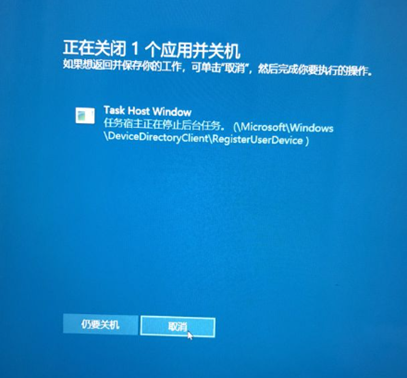文章目录
- Android SystemServer启动流程
- 概述
- 流程图
- 源码分析
- 创建SystemServer进程
- 启动SystemServer进程
- SystemServer#main()
- SystemServer#run()
- SystemServer#createSystemContext()
- SystemServer#startBootstrapServices()
- SystemServer#startCoreServices()
- SystemServer#startOtherServices()
Android SystemServer启动流程
概述
SystemServer 是 Android 系统 Java 层最重要的进程之一,几乎所有的 Java 层 Binder 服务都运行在这个进程里。
SystemServer 的启动大致可分为两个阶段:
- 在 Zygote 进程中调用 fork 系统调用创建 SystemServer 进程。
- 执行 SystemServer 类的 main 方法来启动系统服务。
流程图

源码分析
创建SystemServer进程
// ZygoteInit类
public static void main(String argv[]) {
if (startSystemServer) {
// fork出SystemServer进程
Runnable r = forkSystemServer(abiList, zygoteSocketName, zygoteServer);
if (r != null) {
r.run();
return;
}
}
}
// ZygoteInit类
private static Runnable forkSystemServer(String abiList, String socketName, ZygoteServer zygoteServer) {
String args[] = {
"--setuid=1000",
"--setgid=1000",
"--setgroups=1001,1002,1003,1004,1005,1006,1007,1008,1009,1010,1018,1021,1023,"
+ "1024,1032,1065,3001,3002,3003,3006,3007,3009,3010,3011",
"--capabilities=" + capabilities + "," + capabilities,
"--nice-name=system_server",
"--runtime-args",
"--target-sdk-version=" + VMRuntime.SDK_VERSION_CUR_DEVELOPMENT,
"com.android.server.SystemServer",
};
ZygoteArguments parsedArgs = null;
int pid;
try {
parsedArgs = new ZygoteArguments(args);
Zygote.applyDebuggerSystemProperty(parsedArgs);
Zygote.applyInvokeWithSystemProperty(parsedArgs);
if (Zygote.nativeSupportsTaggedPointers()) {
parsedArgs.mRuntimeFlags |= Zygote.MEMORY_TAG_LEVEL_TBI;
}
parsedArgs.mRuntimeFlags |= Zygote.GWP_ASAN_LEVEL_LOTTERY;
if (shouldProfileSystemServer()) {
parsedArgs.mRuntimeFlags |= Zygote.PROFILE_SYSTEM_SERVER;
}
// 最终调用Zygote.forkSystemServer()
pid = Zygote.forkSystemServer(
parsedArgs.mUid, parsedArgs.mGid,
parsedArgs.mGids,
parsedArgs.mRuntimeFlags,
null,
parsedArgs.mPermittedCapabilities,
parsedArgs.mEffectiveCapabilities);
} catch (IllegalArgumentException ex) {
throw new RuntimeException(ex);
}
/* For child process */
if (pid == 0) {
if (hasSecondZygote(abiList)) {
waitForSecondaryZygote(socketName);
}
zygoteServer.closeServerSocket();
// 处理SystemServer
return handleSystemServerProcess(parsedArgs);
}
return null;
}
// Zygote类
static int forkSystemServer(int uid, int gid, int[] gids, int runtimeFlags,
int[][] rlimits, long permittedCapabilities, long effectiveCapabilities) {
ZygoteHooks.preFork();
// nativeForkSystemServer()是native方法
int pid = nativeForkSystemServer(
uid, gid, gids, runtimeFlags, rlimits,
permittedCapabilities, effectiveCapabilities);
Thread.currentThread().setPriority(Thread.NORM_PRIORITY);
ZygoteHooks.postForkCommon();
return pid;
}
ZygoteInit#forkSystemServer() 最终调用 Zygote#forkSystemServer() 创建 SystemServer 进程。
SystemServer 进程的id 为1000,进程名为 system_server。
启动SystemServer进程
// ZygoteInit类
private static Runnable handleSystemServerProcess(ZygoteArguments parsedArgs) {
// 设置umask为0077,保证SystemServer只有权限
Os.umask(S_IRWXG | S_IRWXO);
// 设置进程名
if (parsedArgs.mNiceName != null) {
Process.setArgV0(parsedArgs.mNiceName);
}
// 设置classpath
final String systemServerClasspath = Os.getenv("SYSTEMSERVERCLASSPATH");
if (systemServerClasspath != null) {
performSystemServerDexOpt(systemServerClasspath);
if (shouldProfileSystemServer() && (Build.IS_USERDEBUG || Build.IS_ENG)) {
try {
Log.d(TAG, "Preparing system server profile");
prepareSystemServerProfile(systemServerClasspath);
} catch (Exception e) {
Log.wtf(TAG, "Failed to set up system server profile", e);
}
}
}
if (parsedArgs.mInvokeWith != null) {
String[] args = parsedArgs.mRemainingArgs;
if (systemServerClasspath != null) {
String[] amendedArgs = new String[args.length + 2];
amendedArgs[0] = "-cp";
amendedArgs[1] = systemServerClasspath;
System.arraycopy(args, 0, amendedArgs, 2, args.length);
args = amendedArgs;
}
WrapperInit.execApplication(parsedArgs.mInvokeWith,
parsedArgs.mNiceName, parsedArgs.mTargetSdkVersion,
VMRuntime.getCurrentInstructionSet(), null, args);
throw new IllegalStateException("Unexpected return from WrapperInit.execApplication");
} else {
ClassLoader cl = null;
if (systemServerClasspath != null) {
// 创建ClassLoader
cl = createPathClassLoader(systemServerClasspath, parsedArgs.mTargetSdkVersion);
Thread.currentThread().setContextClassLoader(cl);
}
// 查找main()方法,调用ZygoteInit#zygoteInit()
return ZygoteInit.zygoteInit(parsedArgs.mTargetSdkVersion,
parsedArgs.mDisabledCompatChanges,
parsedArgs.mRemainingArgs, cl);
}
}
说明:这里主要做一些配置工作。
// ZygoteInit类
public static final Runnable zygoteInit(int targetSdkVersion, long[] disabledCompatChanges,
String[] argv, ClassLoader classLoader) {
if (RuntimeInit.DEBUG) {
Slog.d(RuntimeInit.TAG, "RuntimeInit: Starting application from zygote");
}
Trace.traceBegin(Trace.TRACE_TAG_ACTIVITY_MANAGER, "ZygoteInit");
RuntimeInit.redirectLogStreams();
RuntimeInit.commonInit();
ZygoteInit.nativeZygoteInit();
// 调用RuntimeInit#applicationInit()
return RuntimeInit.applicationInit(targetSdkVersion, disabledCompatChanges, argv,
classLoader);
}
// RuntimeInit类
protected static Runnable applicationInit(int targetSdkVersion, long[] disabledCompatChanges,
String[] argv, ClassLoader classLoader) {
nativeSetExitWithoutCleanup(true);
VMRuntime.getRuntime().setTargetSdkVersion(targetSdkVersion);
VMRuntime.getRuntime().setDisabledCompatChanges(disabledCompatChanges);
final Arguments args = new Arguments(argv);
Trace.traceEnd(Trace.TRACE_TAG_ACTIVITY_MANAGER);
// 调用RuntimeInit#findStaticMain()查找main()方法
return findStaticMain(args.startClass, args.startArgs, classLoader);
}
说明:
- 设置当前 SDKVersion
- 调用 RuntimeInit#findStaticMain() 查找main 方法。
// RuntimeInit类
protected static Runnable findStaticMain(String className, String[] argv,
ClassLoader classLoader) {
Class<?> cl;
try {
cl = Class.forName(className, true, classLoader);
} catch (ClassNotFoundException ex) {
throw new RuntimeException(
"Missing class when invoking static main " + className,
ex);
}
Method m;
try {
m = cl.getMethod("main", new Class[] { String[].class });
} catch (NoSuchMethodException ex) {
throw new RuntimeException(
"Missing static main on " + className, ex);
} catch (SecurityException ex) {
throw new RuntimeException(
"Problem getting static main on " + className, ex);
}
int modifiers = m.getModifiers();
if (! (Modifier.isStatic(modifiers) && Modifier.isPublic(modifiers))) {
throw new RuntimeException(
"Main method is not public and static on " + className);
}
return new MethodAndArgsCaller(m, argv);
}
说明:通过反射获取 main 方法,包装为 Runnable 对象并返回。
// ZygoteInit类
Runnable r = forkSystemServer(abiList, zygoteSocketName, zygoteServer);
if (r != null) {
r.run();
return;
}
说明:执行 main 方法。
SystemServer#main()
// SystemServer类
public static void main(String[] args) {
new SystemServer().run();
}
SystemServer#run()
// SystemServer类
private void run() {
TimingsTraceAndSlog t = new TimingsTraceAndSlog();
try {
t.traceBegin("InitBeforeStartServices");
SystemProperties.set(SYSPROP_START_COUNT, String.valueOf(mStartCount));
SystemProperties.set(SYSPROP_START_ELAPSED, String.valueOf(mRuntimeStartElapsedTime));
SystemProperties.set(SYSPROP_START_UPTIME, String.valueOf(mRuntimeStartUptime));
EventLog.writeEvent(EventLogTags.SYSTEM_SERVER_START,
mStartCount, mRuntimeStartUptime, mRuntimeStartElapsedTime);
// 设置系统属性,如:设置时区、语言、国家
String timezoneProperty = SystemProperties.get("persist.sys.timezone");
if (timezoneProperty == null || timezoneProperty.isEmpty()) {
Slog.w(TAG, "Timezone not set; setting to GMT.");
SystemProperties.set("persist.sys.timezone", "GMT");
}
if (!SystemProperties.get("persist.sys.language").isEmpty()) {
final String languageTag = Locale.getDefault().toLanguageTag();
SystemProperties.set("persist.sys.locale", languageTag);
SystemProperties.set("persist.sys.language", "");
SystemProperties.set("persist.sys.country", "");
SystemProperties.set("persist.sys.localevar", "");
}
// 设置Binder、Sqlite属性
Binder.setWarnOnBlocking(true);
PackageItemInfo.forceSafeLabels();
SQLiteGlobal.sDefaultSyncMode = SQLiteGlobal.SYNC_MODE_FULL;
SQLiteCompatibilityWalFlags.init(null);
Slog.i(TAG, "Entered the Android system server!");
final long uptimeMillis = SystemClock.elapsedRealtime();
EventLog.writeEvent(EventLogTags.BOOT_PROGRESS_SYSTEM_RUN, uptimeMillis);
if (!mRuntimeRestart) {
FrameworkStatsLog.write(FrameworkStatsLog.BOOT_TIME_EVENT_ELAPSED_TIME_REPORTED,
FrameworkStatsLog
.BOOT_TIME_EVENT_ELAPSED_TIME__EVENT__SYSTEM_SERVER_INIT_START,
uptimeMillis);
}
// 设置虚拟机的运行库路径
SystemProperties.set("persist.sys.dalvik.vm.lib.2", VMRuntime.getRuntime().vmLibrary());
// 调整虚拟机
VMRuntime.getRuntime().clearGrowthLimit();
Build.ensureFingerprintProperty();
Environment.setUserRequired(true);
BaseBundle.setShouldDefuse(true);
Parcel.setStackTraceParceling(true);
BinderInternal.disableBackgroundScheduling(true);
BinderInternal.setMaxThreads(sMaxBinderThreads);
// 设置线程相关属性
android.os.Process.setThreadPriority(
android.os.Process.THREAD_PRIORITY_FOREGROUND);
android.os.Process.setCanSelfBackground(false);
// 创建Looper
Looper.prepareMainLooper();
Looper.getMainLooper().setSlowLogThresholdMs(
SLOW_DISPATCH_THRESHOLD_MS, SLOW_DELIVERY_THRESHOLD_MS);
SystemServiceRegistry.sEnableServiceNotFoundWtf = true;
// 加载
System.loadLibrary("android_servers");
initZygoteChildHeapProfiling();
if (Build.IS_DEBUGGABLE) {
spawnFdLeakCheckThread();
}
performPendingShutdown();
// 创建系统context
createSystemContext();
ActivityThread.initializeMainlineModules();
// 创建SystemServerManager
mSystemServiceManager = new SystemServiceManager(mSystemContext);
mSystemServiceManager.setStartInfo(mRuntimeRestart,
mRuntimeStartElapsedTime, mRuntimeStartUptime);
LocalServices.addService(SystemServiceManager.class, mSystemServiceManager);
SystemServerInitThreadPool.start();
if (Build.IS_DEBUGGABLE) {
String jvmtiAgent = SystemProperties.get("persist.sys.dalvik.jvmtiagent");
if (!jvmtiAgent.isEmpty()) {
int equalIndex = jvmtiAgent.indexOf('=');
String libraryPath = jvmtiAgent.substring(0, equalIndex);
String parameterList =
jvmtiAgent.substring(equalIndex + 1, jvmtiAgent.length());
try {
Debug.attachJvmtiAgent(libraryPath, parameterList, null);
} catch (Exception e) {
Slog.e("System", "*************************************************");
Slog.e("System", "********** Failed to load jvmti plugin: " + jvmtiAgent);
}
}
}
} finally {
t.traceEnd();
}
RuntimeInit.setDefaultApplicationWtfHandler(SystemServer::handleEarlySystemWtf);
// 启动一些列服务
try {
t.traceBegin("StartServices");
startBootstrapServices(t); // 启动一些基础服务
startCoreServices(t); // 启动一些核心服务
startOtherServices(t);
} catch (Throwable ex) {
Slog.e("System", "******************************************");
Slog.e("System", "************ Failure starting system services", ex);
throw ex;
} finally {
t.traceEnd(); // StartServices
}
// ......
Looper.loop();
throw new RuntimeException("Main thread loop unexpectedly exited");
}
说明:
- SystemServer 启动前准备:
- 设置系统时间、时区、语言。
- 调整虚拟机运行库、内存参数、内存利用率。
- 设置线程优先级。
- 加载 libandroid_servies.so 库。
- 创建 Looper 对象。
- 创建 SystemContext、SystemServiceManager。
- 启动 SystemServer:
- 依次执行 startBootstrapServices()、startCoreServices()、startOtherServices()。
- 调用 Looper.loop() 处理消息。
SystemServer#createSystemContext()
// SystemServer类
private void createSystemContext() {
ActivityThread activityThread = ActivityThread.systemMain();
mSystemContext = activityThread.getSystemContext();
mSystemContext.setTheme(DEFAULT_SYSTEM_THEME);
final Context systemUiContext = activityThread.getSystemUiContext();
systemUiContext.setTheme(DEFAULT_SYSTEM_THEME);
}
说明:
- 通过 ActivityThread.systemMain() 获取 ActivityThread 对象。
- 通过 getSystemContext() 获取 SystemContext。
- 设置默认主题。
SystemServer#startBootstrapServices()
// SystemServer类
private void startBootstrapServices(@NonNull TimingsTraceAndSlog t) {
t.traceBegin("startBootstrapServices");
// Start the watchdog as early as possible so we can crash the system server
// if we deadlock during early boot
t.traceBegin("StartWatchdog");
final Watchdog watchdog = Watchdog.getInstance();
watchdog.start();
t.traceEnd();
Slog.i(TAG, "Reading configuration...");
final String TAG_SYSTEM_CONFIG = "ReadingSystemConfig";
t.traceBegin(TAG_SYSTEM_CONFIG);
SystemServerInitThreadPool.submit(SystemConfig::getInstance, TAG_SYSTEM_CONFIG);
t.traceEnd();
// Platform compat service is used by ActivityManagerService, PackageManagerService, and
// possibly others in the future. b/135010838.
t.traceBegin("PlatformCompat");
PlatformCompat platformCompat = new PlatformCompat(mSystemContext);
ServiceManager.addService(Context.PLATFORM_COMPAT_SERVICE, platformCompat);
ServiceManager.addService(Context.PLATFORM_COMPAT_NATIVE_SERVICE,
new PlatformCompatNative(platformCompat));
AppCompatCallbacks.install(new long[0]);
t.traceEnd();
// FileIntegrityService responds to requests from apps and the system. It needs to run after
// the source (i.e. keystore) is ready, and before the apps (or the first customer in the
// system) run.
t.traceBegin("StartFileIntegrityService");
mSystemServiceManager.startService(FileIntegrityService.class);
t.traceEnd();
// Wait for installd to finish starting up so that it has a chance to
// create critical directories such as /data/user with the appropriate
// permissions. We need this to complete before we initialize other services.
t.traceBegin("StartInstaller");
Installer installer = mSystemServiceManager.startService(Installer.class);
t.traceEnd();
// In some cases after launching an app we need to access device identifiers,
// therefore register the device identifier policy before the activity manager.
t.traceBegin("DeviceIdentifiersPolicyService");
mSystemServiceManager.startService(DeviceIdentifiersPolicyService.class);
t.traceEnd();
// Uri Grants Manager.
t.traceBegin("UriGrantsManagerService");
mSystemServiceManager.startService(UriGrantsManagerService.Lifecycle.class);
t.traceEnd();
// Activity manager runs the show.
t.traceBegin("StartActivityManager");
// TODO: Might need to move after migration to WM.
ActivityTaskManagerService atm = mSystemServiceManager.startService(
ActivityTaskManagerService.Lifecycle.class).getService();
mActivityManagerService = ActivityManagerService.Lifecycle.startService(
mSystemServiceManager, atm);
mActivityManagerService.setSystemServiceManager(mSystemServiceManager);
mActivityManagerService.setInstaller(installer);
mWindowManagerGlobalLock = atm.getGlobalLock();
t.traceEnd();
// Data loader manager service needs to be started before package manager
t.traceBegin("StartDataLoaderManagerService");
mDataLoaderManagerService = mSystemServiceManager.startService(
DataLoaderManagerService.class);
t.traceEnd();
// Incremental service needs to be started before package manager
t.traceBegin("StartIncrementalService");
mIncrementalServiceHandle = startIncrementalService();
t.traceEnd();
// Power manager needs to be started early because other services need it.
// Native daemons may be watching for it to be registered so it must be ready
// to handle incoming binder calls immediately (including being able to verify
// the permissions for those calls).
t.traceBegin("StartPowerManager");
mPowerManagerService = mSystemServiceManager.startService(PowerManagerService.class);
t.traceEnd();
t.traceBegin("StartThermalManager");
mSystemServiceManager.startService(ThermalManagerService.class);
t.traceEnd();
// Now that the power manager has been started, let the activity manager
// initialize power management features.
t.traceBegin("InitPowerManagement");
mActivityManagerService.initPowerManagement();
t.traceEnd();
// Bring up recovery system in case a rescue party needs a reboot
t.traceBegin("StartRecoverySystemService");
mSystemServiceManager.startService(RecoverySystemService.Lifecycle.class);
t.traceEnd();
// Now that we have the bare essentials of the OS up and running, take
// note that we just booted, which might send out a rescue party if
// we're stuck in a runtime restart loop.
RescueParty.registerHealthObserver(mSystemContext);
PackageWatchdog.getInstance(mSystemContext).noteBoot();
// Manages LEDs and display backlight so we need it to bring up the display.
t.traceBegin("StartLightsService");
mSystemServiceManager.startService(LightsService.class);
t.traceEnd();
t.traceBegin("StartSidekickService");
// Package manager isn't started yet; need to use SysProp not hardware feature
if (SystemProperties.getBoolean("config.enable_sidekick_graphics", false)) {
mSystemServiceManager.startService(WEAR_SIDEKICK_SERVICE_CLASS);
}
t.traceEnd();
// Display manager is needed to provide display metrics before package manager
// starts up.
t.traceBegin("StartDisplayManager");
mDisplayManagerService = mSystemServiceManager.startService(DisplayManagerService.class);
t.traceEnd();
// We need the default display before we can initialize the package manager.
t.traceBegin("WaitForDisplay");
mSystemServiceManager.startBootPhase(t, SystemService.PHASE_WAIT_FOR_DEFAULT_DISPLAY);
t.traceEnd();
// Only run "core" apps if we're encrypting the device.
String cryptState = VoldProperties.decrypt().orElse("");
if (ENCRYPTING_STATE.equals(cryptState)) {
Slog.w(TAG, "Detected encryption in progress - only parsing core apps");
mOnlyCore = true;
} else if (ENCRYPTED_STATE.equals(cryptState)) {
Slog.w(TAG, "Device encrypted - only parsing core apps");
mOnlyCore = true;
}
// Start the package manager.
if (!mRuntimeRestart) {
FrameworkStatsLog.write(FrameworkStatsLog.BOOT_TIME_EVENT_ELAPSED_TIME_REPORTED,
FrameworkStatsLog
.BOOT_TIME_EVENT_ELAPSED_TIME__EVENT__PACKAGE_MANAGER_INIT_START,
SystemClock.elapsedRealtime());
}
t.traceBegin("StartPackageManagerService");
try {
Watchdog.getInstance().pauseWatchingCurrentThread("packagemanagermain");
mPackageManagerService = PackageManagerService.main(mSystemContext, installer,
mFactoryTestMode != FactoryTest.FACTORY_TEST_OFF, mOnlyCore);
} finally {
Watchdog.getInstance().resumeWatchingCurrentThread("packagemanagermain");
}
// Now that the package manager has started, register the dex load reporter to capture any
// dex files loaded by system server.
// These dex files will be optimized by the BackgroundDexOptService.
SystemServerDexLoadReporter.configureSystemServerDexReporter(mPackageManagerService);
mFirstBoot = mPackageManagerService.isFirstBoot();
mPackageManager = mSystemContext.getPackageManager();
t.traceEnd();
if (!mRuntimeRestart && !isFirstBootOrUpgrade()) {
FrameworkStatsLog.write(FrameworkStatsLog.BOOT_TIME_EVENT_ELAPSED_TIME_REPORTED,
FrameworkStatsLog
.BOOT_TIME_EVENT_ELAPSED_TIME__EVENT__PACKAGE_MANAGER_INIT_READY,
SystemClock.elapsedRealtime());
}
// Manages A/B OTA dexopting. This is a bootstrap service as we need it to rename
// A/B artifacts after boot, before anything else might touch/need them.
// Note: this isn't needed during decryption (we don't have /data anyways).
if (!mOnlyCore) {
boolean disableOtaDexopt = SystemProperties.getBoolean("config.disable_otadexopt",
false);
if (!disableOtaDexopt) {
t.traceBegin("StartOtaDexOptService");
try {
Watchdog.getInstance().pauseWatchingCurrentThread("moveab");
OtaDexoptService.main(mSystemContext, mPackageManagerService);
} catch (Throwable e) {
reportWtf("starting OtaDexOptService", e);
} finally {
Watchdog.getInstance().resumeWatchingCurrentThread("moveab");
t.traceEnd();
}
}
}
t.traceBegin("StartUserManagerService");
mSystemServiceManager.startService(UserManagerService.LifeCycle.class);
t.traceEnd();
// Initialize attribute cache used to cache resources from packages.
t.traceBegin("InitAttributerCache");
AttributeCache.init(mSystemContext);
t.traceEnd();
// Set up the Application instance for the system process and get started.
t.traceBegin("SetSystemProcess");
mActivityManagerService.setSystemProcess();
t.traceEnd();
// Complete the watchdog setup with an ActivityManager instance and listen for reboots
// Do this only after the ActivityManagerService is properly started as a system process
t.traceBegin("InitWatchdog");
watchdog.init(mSystemContext, mActivityManagerService);
t.traceEnd();
// DisplayManagerService needs to setup android.display scheduling related policies
// since setSystemProcess() would have overridden policies due to setProcessGroup
mDisplayManagerService.setupSchedulerPolicies();
// Manages Overlay packages
t.traceBegin("StartOverlayManagerService");
mSystemServiceManager.startService(new OverlayManagerService(mSystemContext));
t.traceEnd();
t.traceBegin("StartSensorPrivacyService");
mSystemServiceManager.startService(new SensorPrivacyService(mSystemContext));
t.traceEnd();
if (SystemProperties.getInt("persist.sys.displayinset.top", 0) > 0) {
// DisplayManager needs the overlay immediately.
mActivityManagerService.updateSystemUiContext();
LocalServices.getService(DisplayManagerInternal.class).onOverlayChanged();
}
// The sensor service needs access to package manager service, app ops
// service, and permissions service, therefore we start it after them.
// Start sensor service in a separate thread. Completion should be checked
// before using it.
mSensorServiceStart = SystemServerInitThreadPool.submit(() -> {
TimingsTraceAndSlog traceLog = TimingsTraceAndSlog.newAsyncLog();
traceLog.traceBegin(START_SENSOR_SERVICE);
startSensorService();
traceLog.traceEnd();
}, START_SENSOR_SERVICE);
t.traceEnd(); // startBootstrapServices
}
说明:
- 启动一系列引导服务。如:Installer、AMS/ATMS、PMS、PKMS 等。
- 基本都是通过 SystemServiceManager#startService() 启动的。
- SystemServiceManager 类用于创建和管理服务,内部通过 ArrayList 管理服务。
SystemServer#startCoreServices()
private void startCoreServices(@NonNull TimingsTraceAndSlog t) {
t.traceBegin("startCoreServices");
// Service for system config
t.traceBegin("StartSystemConfigService");
mSystemServiceManager.startService(SystemConfigService.class);
t.traceEnd();
t.traceBegin("StartBatteryService");
// Tracks the battery level. Requires LightService.
mSystemServiceManager.startService(BatteryService.class);
t.traceEnd();
// Tracks application usage stats.
t.traceBegin("StartUsageService");
mSystemServiceManager.startService(UsageStatsService.class);
mActivityManagerService.setUsageStatsManager(
LocalServices.getService(UsageStatsManagerInternal.class));
t.traceEnd();
// Tracks whether the updatable WebView is in a ready state and watches for update installs.
if (mPackageManager.hasSystemFeature(PackageManager.FEATURE_WEBVIEW)) {
t.traceBegin("StartWebViewUpdateService");
mWebViewUpdateService = mSystemServiceManager.startService(WebViewUpdateService.class);
t.traceEnd();
}
// Tracks and caches the device state.
t.traceBegin("StartCachedDeviceStateService");
mSystemServiceManager.startService(CachedDeviceStateService.class);
t.traceEnd();
// Tracks cpu time spent in binder calls
t.traceBegin("StartBinderCallsStatsService");
mSystemServiceManager.startService(BinderCallsStatsService.LifeCycle.class);
t.traceEnd();
// Tracks time spent in handling messages in handlers.
t.traceBegin("StartLooperStatsService");
mSystemServiceManager.startService(LooperStatsService.Lifecycle.class);
t.traceEnd();
// Manages apk rollbacks.
t.traceBegin("StartRollbackManagerService");
mSystemServiceManager.startService(ROLLBACK_MANAGER_SERVICE_CLASS);
t.traceEnd();
// Service to capture bugreports.
t.traceBegin("StartBugreportManagerService");
mSystemServiceManager.startService(BugreportManagerService.class);
t.traceEnd();
// Serivce for GPU and GPU driver.
t.traceBegin("GpuService");
mSystemServiceManager.startService(GpuService.class);
t.traceEnd();
t.traceEnd(); // startCoreServices
}
说明:
- 启动一系列核心服务。如:BatteryService、UsageStatsService、WebViewUpdateService、BugreportManagerService、GpuService 等。
SystemServer#startOtherServices()
private void startOtherServices(@NonNull TimingsTraceAndSlog t) {
// ......
// 初始化一些基础服务,如:WindowManagerServer、NetworkManagementService、NetworkPolicyManagerService
// 初始化一些UI相关服务,如:InputManagerService、AccessibilityManagerService、StorageManagerService、NotificationManagerService、UiModeManagerService
// ......
mActivityManagerService.systemReady(() -> {
// ......
}, t);
t.traceEnd(); // startOtherServices
}
// ActivityManagerService类
public void systemReady(final Runnable goingCallback, TimingsTraceLog traceLog) {a
traceLog.traceBegin("PhaseActivityManagerReady");
synchronized(this) {
if (mSystemReady) {
if (goingCallback != null) {
goingCallback.run();
}
return;
}
// ....
}
// ......
synchronized (this) {
// ......
if (bootingSystemUser) {
// 启动桌面Activity
mAtmInternal.startHomeOnAllDisplays(currentUserId, "systemReady");
}
//......
}
// ......
}



















